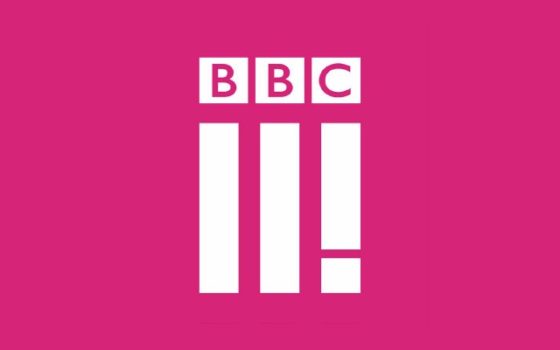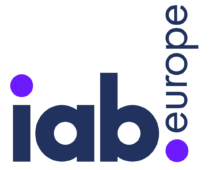Is BBC3's Move Online the Future of TV?
by Lindsay Rowntree on 17th Feb 2016 in News

Following ExchangeWire’s piece published 15 February about The Independent newspaper brand becoming a digital pure play, the theme of going 100% digital continues, with BBC3 achieving a world-first yesterday (16 February) by becoming the first-ever television channel to switch from linear broadcasting to existing purely online. Is this a sign of the end of linear TV, or could it be a leading example of a television broadcaster trying to evolve to meet the viewing habits of its audience?
BBC3 was launched 13 years ago to create programmes that engaged with a younger audience, of ages 16-34, and it has been responsible for launching some notable careers, including James Corden and David Walliams. It is known for giving facetime to more experimental programmes and for covering difficult issues that face youths today.
There is a lot of negative press around the announcement of BBC3 going online; but are the criticisms fair? The intended BBC3 audience cannot be bucketed in with standard viewers of linear TV. Tom Williams, CEO, Ostmodern comments: “What these critics seem to forget is that BBC3’s audience is not representative of the average TV viewer. The reality is that younger audiences, particularly those in the 16-34 age bracket that BBC3 serves, are leaning more and more towards bite-sized, on demand, content.”
The abundance of social media and online content platforms, such as Facebook, Instagram, YouTube and Snapchat, along with the types of content they predominantly publish, show that short-form engagement plays a significant role in the consumption of media today. In response to that, BBC3 will be hosting The Daily Drop: a daily stream of content to include short-form videos, blogs, social media, image galleries and trending news stories. As Williams states: “This content section will not be pitted against established broadcast channels or VoD services in this regard. Instead, it will be going head-to-head with current heavyweights in the short-form content environment – YouTube and Facebook Video.”
So, BBC3 cannot be referred to simply as a TV channel; in its mixture of various forms of content, it is reinventing itself as a social/VOD platform hybrid. Whichever way it chooses to distinguish itself, it needs to make sure that it has its own identity, and the key to that is the same quality of content as when it was broadcasting linear TV, not for it to become an aggregator of other content. The BBC may find challenges in finding writers willing to debut their material to an online-only channel, no matter how much weight the BBC brand name has. BBC3 will need to go a long way to prove that it has an audience, which can compete with its linear counterparts, when it comes to securing content.
The BARB (Broadcasters’ Audience Research Board) viewing figures for April-June 2015, published by the BBC, show that BBC TV, in its entirety, has an average weekly reach of 45.9 million viewers. BBC3 accounts for 9.9 million of that audience reach; yet, interestingly, only 3.1 million of BBC3’s total reach comes from the target 16-34 audience. When it was first announced back in 2014 that BBC3 would be shifting to 100% online, forecasts suggested, according to Williams, that “around 80% of viewers who watch BBC3, and no other BBC television channel, could desert the corporation following the switch”. Given that up to 69% of BBC3’s audience could feasibly be above the age of 34 (rather than below 16), that prediction could well come true – the BBC will need to find a way to re-engage that audience; be it across the rest of the network or on the new, online BBC3.
While a bold, and no doubt bittersweet, move for the BBC, it is infinitely easier for the BBC, a public broadcaster, to make the switch from linear to online than it would be for commercial TV networks. The savings to be made in production and infrastructure are in no way impacted by a loss in advertising revenue; there isn’t any. It is for this reason that it is unlikely any commercial broadcaster will follow suit in at least the next 10 years; because the monetisation of linear TV remains significant. While online viewing, VOD, and catch up TV are becoming increasingly standard viewing habits; advertisers are still investing significant amounts of ad spend into TV, as that’s where their audience is. In a world where a 30-second ad spot during the X Factor final can command up to £200,000, commercial broadcasters are not in a position to be shifting TV channels into an online-only environment; nor should they need to. With the rise of addressable TV and the blurring lines of TV and video advertising, commercial broadcasters are in a position where they can dabble with formats and platforms and still keep their core programming and advertising inventory business as usual. Williams comments: “It’s an approach Channel 4 has taken in the past, albeit on a much smaller scale. The broadcaster took a similar tactic for its All 4 platform, making short-form content available exclusively online and catering it to a younger audience – that same 16-34 age bracket BBC3 is targeting. New online-only content was commissioned as a result and attracted new talent in the process. Evidently the opportunities are still there, even if the delivery medium has changed.”
There is absolutely still a place for linear TV broadcasting, and we are moving into a space where linear TV and VOD are able to co-exist quite comfortably, as people’s viewing habits adjust to their lifestyles. This will no doubt continue to shift in favour of VOD, but not so drastically and quickly that all TV channels will be required to shut down their linear offerings.
Where the likes of BBC3 and All 4 are trying to differentiate and diversify is through the availability of different forms of content. Linear TV still has a huge role to play; but the changes in content consumption can’t be ignored. Williams says: “What’s imperative, across the board, regardless of the delivery medium, is the widespread availability of content across multiple devices and platforms. Also, crucially, helping the viewer discover new content that’s interesting and relevant to them.” The BBC have the data to support this. They know that there is a rise in the consumption of BBC iPlayer content through mobile devices and connected TVs. In the past five years, the BBC have seen the number of BBC iPlayer TV programme requests almost triple, and the proportion of those coming from mobiles and tablets is well over half. Williams confirms that, “getting the right content in front of the right audience through connected devices will undoubtedly become one of the most important factors to ensure BBC3’s online-only future is a resounding success”.
The BBC have put themselves in a very strong position, and it’s imperative that they don't shrink away from the spotlight that will be cast on them over the coming months and years, but instead to embrace the power they have as a leading linear broadcaster and transfer that into their new online content.








Follow ExchangeWire